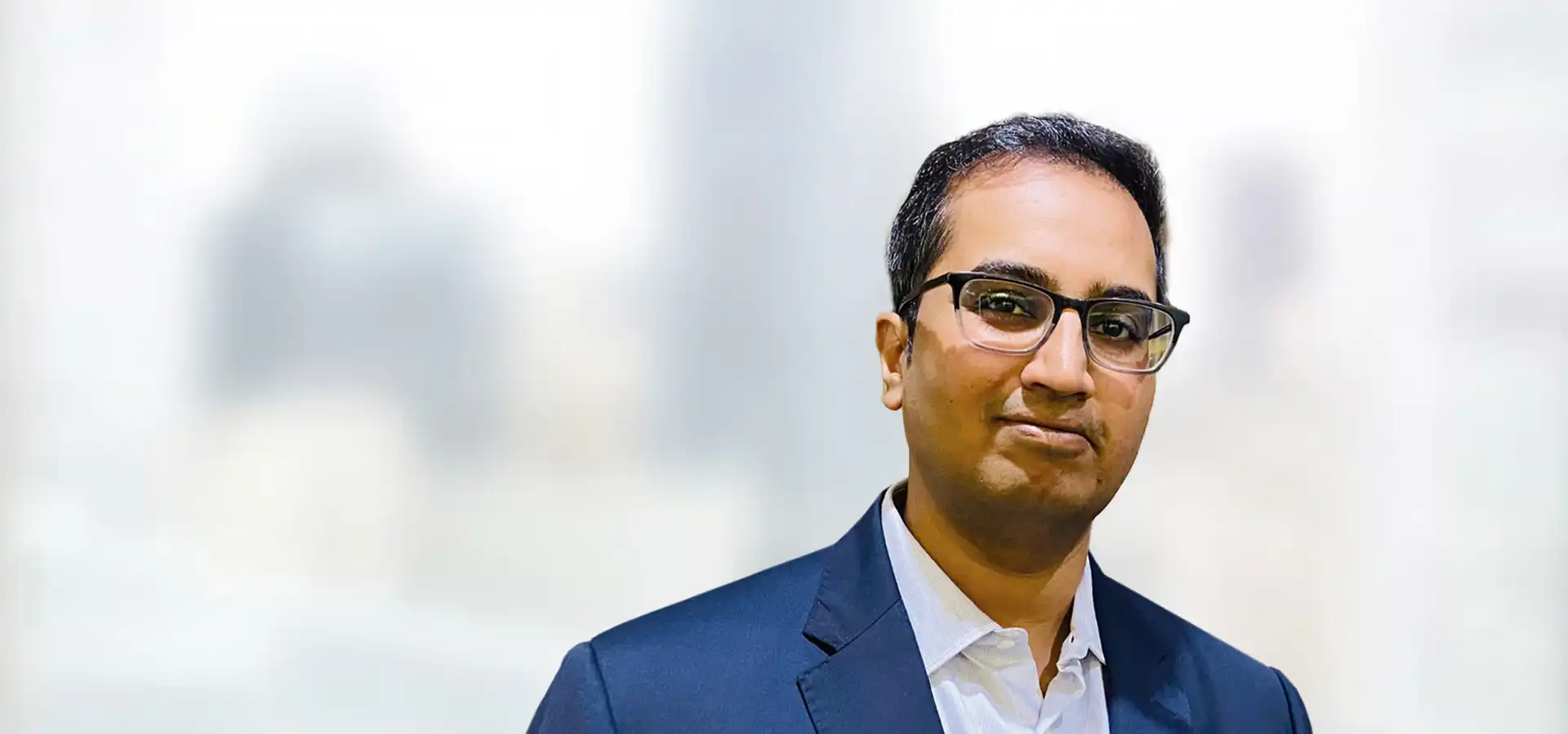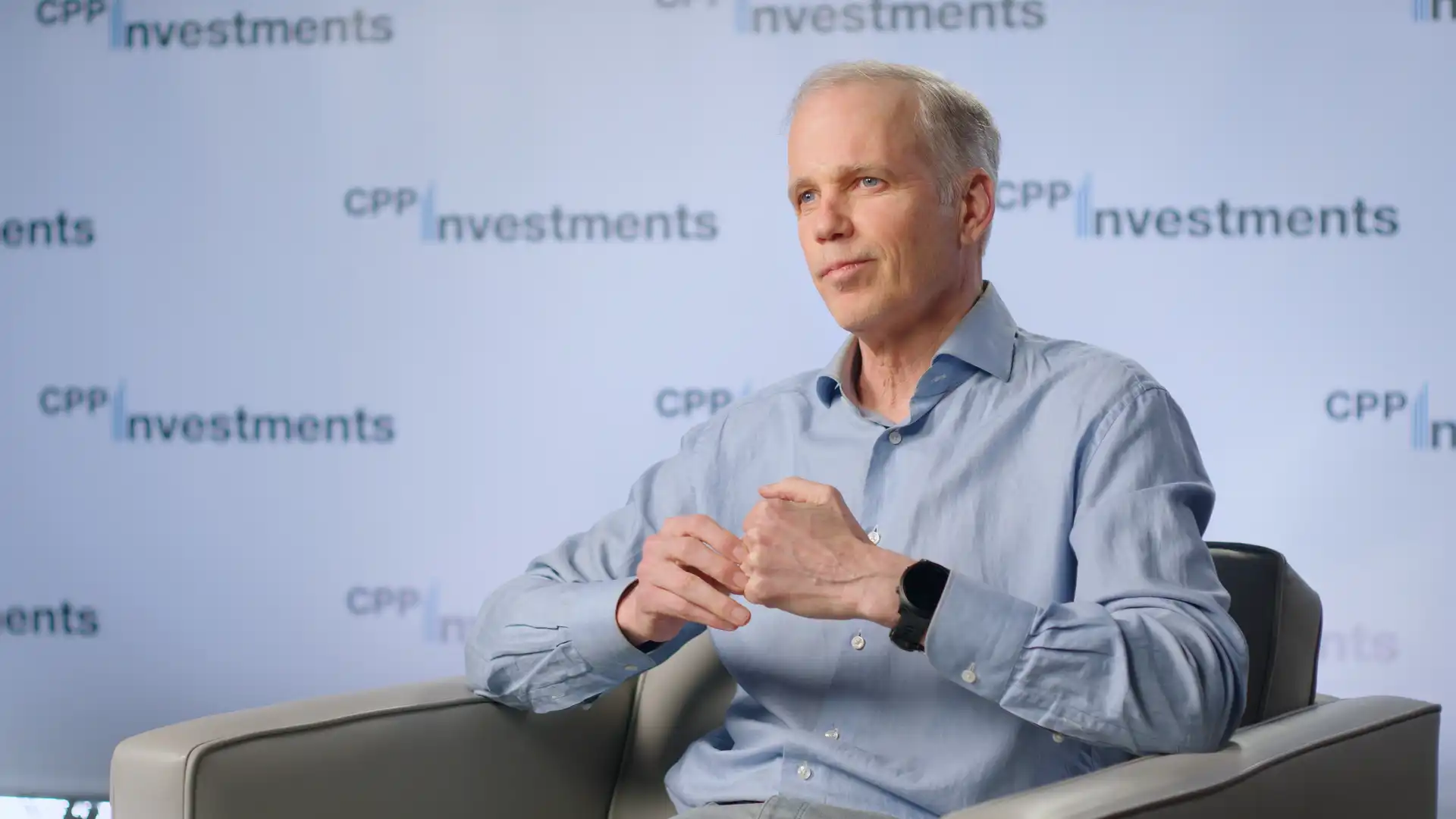Sujeet Govindaraju
Managing Director, India Office Head
Q: What’s the outlook for India as a destination for capital this year?
A: Foreign direct investment (FDI) into India has steadily grown more than 23x since the start of the millennium, and last year reached its highest ever inflow of US$83 billion1, which made India the seventh-largest recipient of FDI globally2. This year, that number is expected to be about US$100 billion3. So, it looks like the economic reforms that the current government is trying to implement on the ground, certainly from a foreign investment perspective, are having quite an impact.
Q: How much of the investment activity relates to supply-chain diversification?
A: Especially during COVID-19, with the global challenges that were happening, the Government of India thought very carefully about how to position the country as a China-plus-one destination. It identified 14 sectors where it wanted to boost local manufacturing for domestic and international markets.
Two key initiatives were announced by the government to make India competitive with other manufacturing destinations: a reduction of the corporate tax rate for new manufacturing companies to 17%, which is one of the lowest globally; and about US$33 billion in production-linked incentives to subsidize manufacturing costs in the 14 priority sectors.
Of those sectors, we’ve seen remarkable results in the manufacturing of mobile phones. India is the second-largest smartphone market in the world, and our dependency on imports sank to 5% of the market last year, compared to 78% in 20154. Meanwhile, India’s mobile-phone exports are expected to rise from about US$9 billion this year to roughly US$60 billion by 20265.
Q: What about the outlook for the quantum of investment by India’s largest corporations?
A: We have investments in some of the large corporations here and we also maintain really good relationships with many of the others that we hope to make future investments in. And from what we have gathered, especially post-COVID, there’s a very bullish outlook. We’ve heard numbers of anywhere from US$5 billion to US$50 billion, per group, of capital expenditure plans in the next five to seven years. It’s just staggering.
Q: Where and how does CPP Investments stand out in India?
A: There are three areas where we have an edge.
It starts with diversification of our book by asset class. As at September 2022, we had about CA$21.1 billion invested in India — which makes us one of the largest institutional investors in the country. We are not just a real-asset investor, we’re not just a public-market investor, we’re not just a private-equity investor, we’re not just a credit investor. We’re all of them and we are sector agnostic.
Secondly, we’ve been investing with a long-term focus in India since 2009, and we established a presence in Mumbai in 2015. With product specialists on the ground across asset classes, we’ve been able to build solid relationships, shortlist and diligence opportunities and generate good risk-adjusted returns.
Lastly, because of our global investing experience, CPP Investments has extensive sector knowledge that we can bring to bear. For example, in the digital sector, we have invested in some of the largest unicorns across developed and emerging markets in sub-sectors like super apps, vertical e-commerce, fintech, health tech, auto tech, software as a service and logistics tech.
Q: The International Monetary Fund is estimating that India’s economy will grow 6.1% this year and 6.8% in 2024, significantly ahead of every other nation the IMF tracks. What do you see as the primary drivers? And what’s the most important downside risk?
A: There are three key growth drivers for India’s economy.
Consumption has been brewing for a while, and it’s really starting to come through because of the resilient Indian middle class, many of whom are now trying to become upper-middle class. Put it this way: India currently has about 75 million households with more than US$10,000 in annual income; by 2031, more than 190 million households are expected to be in that income bracket. So that would mean exponential growth in disposable income for middle-class Indians, which would create demand for a variety of goods and services. That’s the expectation.
Another big growth driver is offshoring. India is already the ‘office to the world’; Morgan Stanley has estimated service exports will jump to US$680 billion by 2031 from US$240 billion in 2021.
And the other driver is manufacturing. Like I said, India has an opportunity to become a reliable manufacturing hub in sectors where it has a large domestic market.
In terms of downside risk, India is very sensitive to oil prices because it imports 84% of its overall crude oil requirements6. A 10% increase in the price of oil would drive up wholesale inflation by up to 100 basis points.
Q: Given that dependency on oil imports, what’s happening in India right now from a renewables standpoint?
A: India currently stands fourth globally in renewable energy installed capacity, with about 160 GW, and has set an ambitious target of increasing capacity to 500 GW by 2030. Utilizing the Central Government’s policy framework, progressive States are trying to make it attractive for renewable-energy developers to establish large-scale solar and wind projects.
Regulations have evolved to protect investor interests and ensure contract sanctity. In the past, a few States tried to renegotiate signed Power Purchase Agreements (PPAs) considering falling raw material prices. The Central Government then stepped in to ensure PPAs were honoured. The flip side to this maturing regulatory environment is that competition is increasing, which drives down margins for developers. So, large developers are trying to differentiate themselves by integrating their supply chains, cutting costs with scale, having a low cost of capital backed by marquee investors and developing an ability to execute large, complex projects. We are invested in ReNew Power, which is one of India’s largest such developers.
1 Source: Ministry of Commerce & Industry, Govt. of India
2 Source: Ministry of Commerce & Industry, Govt. of India
3 Source: Ministry of Commerce & Industry, Govt. of India
4 Source: Ministry of Electronics & IT, Govt. of India
5 Source: Ministry of Electronics & IT, Govt. of India
6 Source: Ministry of Petroleum and Natural Gas, Govt. of India
Ed Cass on the state of markets and CPP Investments’ evolution
Our Chief Investment Officer discusses the investing landscape and portfolio construction in this on-camera interview.
Why our Chief Sustainability Officer sees ‘reason to be excited’ about
Richard Manley provides an update on uptake of our Abatement Capacity Assessment Framework and the outlook for decarbonization.
How we’re navigating a world in flux
Our debut quarterly newsletter is rich with bite-sized insights and updates on our activities.







